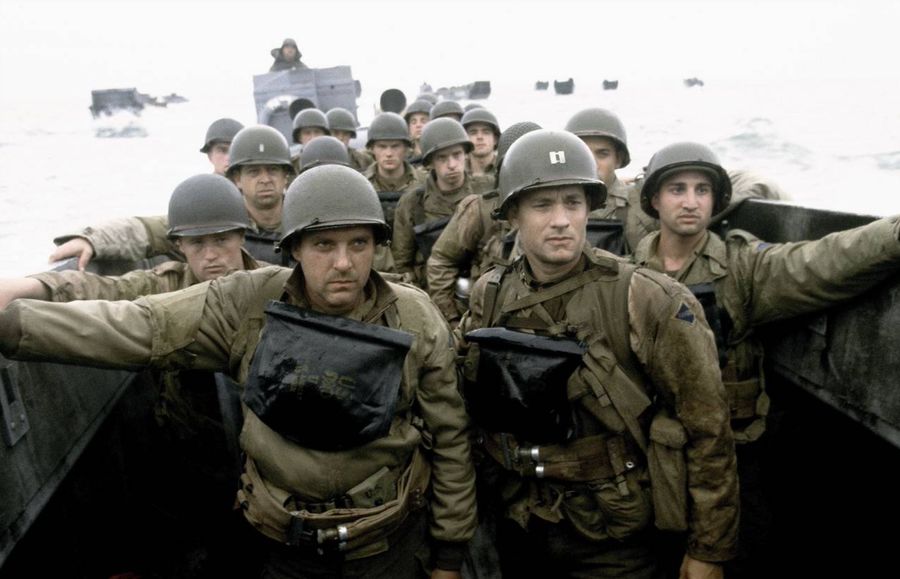Regarded as perhaps the ultimate reflection of war-time horror, Steven Spielberg‘s Saving Private Ryan, and more importantly, its opening scene, there has always been intrigue surrounding how the filmmaker managed to capture it so effectively. As the classic war movie lands on Netflix this week, we look back at the historic scene.
The 20-minute introduction to the film shows American troops preparing for battle as they arrive on Omaha beach in tinpot vessels before being immediately met with the roar of gunfire and the true horrors of war. Showing the graphic dismemberment of troops, as well as the true fear of those not willing to fight, Spielberg manages to recreate the many terrors of D-Day, both the carefully nuanced emotions, as well as the vocal, physical horror.
It was intense enough to make lead actor Tom Hanks cry when he saw the film for the first time, noting: “When I first saw the completed sequence, I wept,” revealed the actor.
Continuing, he adds: “The landing, from the boats to the top of the bluff, was just too horrible to watch without becoming undone. People see that landing sequence as a seminal 20 minutes, not just in the history of war movies, but in all of cinema”.
Tom Hanks’ observation is quite right, too, with even veterans of WWII like Frank DeVita stating: “The horrors depicted in the movie are accurate,” which was Speilberg’s ultimate goal. Uninterested in making a war film in the typical Hollywood tradition, the director later noted: “When they cooperated with Roosevelt to make movies extolling the virtues and nobility of the war. They would never have allowed the story to be told this way”.
He added: “They weren’t willing, in those days, to show America the dark side of the face of war.”
To achieve this, Spielberg perfectly synthesised cinema’s technical elements to bring the spectator inside the film, experiencing D-Day for the first time, just like the young soldiers who fought on that fateful day.
Discolouring the cinematography to make it “more like colour newsreel footage from the 1940s”, Spielberg worked with cinematographer Janusz Kamiński to achieve a low-tech aesthetic. This also involved setting the shutter timer to 90 or 45 degrees, as opposed to the standard 180-degree timing, which Kamiński explains: “In this way, we attained a certain staccato in the actors’ movements and a certain crispness in the explosions, which makes them slightly more realistic”.
Rightfully earning Best Director at the Academy Awards for his efforts, Steven Spielberg accurately reflected the horrors of the Second World War for the benefit of modern history. As the filmmaker commented, “I didn’t want to do something I’ve done with many of my other movies – allowing the audience to be spectators. Here I wanted to bring the audience onto the stage with me and demand them to be participants with those kids who had never seen combat before in real life”.
Watch Saving Private Ryan on Netflix now.
